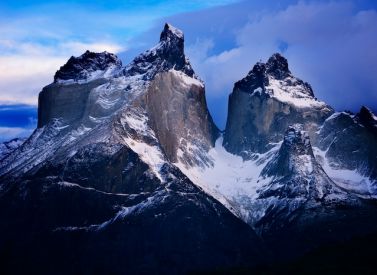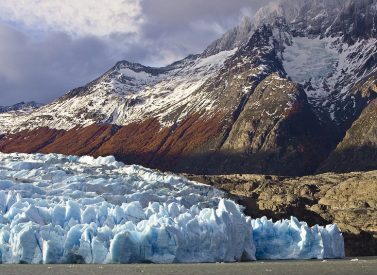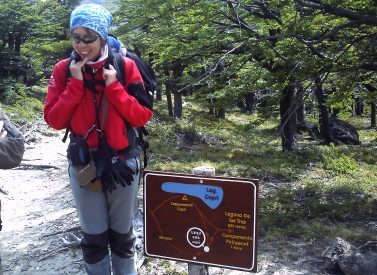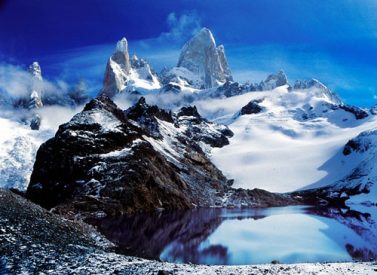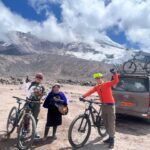
Patagonia Self-guided Tour with W Trek
Self-guided Patagonia trekking tour, offering hiking independence.
Trek around Argentina’s Fitzroy and Torres del Paine’s W routes.
We organise all the logistics – everyone walking the Paine W must have confirmed reservations in advance – so you can hike in these wonderful national parks.
Everything is taken care of – we book up hotels, mountain refuges, buses, ferries and meals and you concentrate on enjoying the walking.
This adventure holiday ideal for trekkers who don’t want to carry a heavy backpack or camp. The trails are well signposted, and you can buy maps from us in advance. Read all about how Paine W works with Kat’s insightful self-guided Paine W trek review.
More on self-guided Patagonia W trek
In Fitz Roy National Park, trek to the foot of Mount Fitz Roy, Cerro Torre glacier and the Pliegue Tumbado viewpoint, or Lago Viedma.
Paine is a mix of dramatic scenery, beautiful forests and huge lakes, and our Paine W takes you up close to all the highlights.
Grey Glacier, French Valley, Towers of Paine – and a cosy mountain refugio will be your shelter.
No Patagonia holiday is complete without a day at the Perito Moreno glacier. It is 18 miles long, three miles wide and up to 2,300ft deep and advancing quickly, so you are guaranteed to see huge icebergs crashing into the lake it feeds.
The itinerary suggested here is just that. We can run it in reverse, modify the days, accommodation, add guides or cover only one park etc.
Trip Highlights
Print Share Download as PDF-
Self-guided Paine W Trek.
-
Flexible itinerary with all logistics taken care of - including now essential Paine W reservations.
-
Perito Moreno glacier day tour.
-
Fitzroy and Los Glaciares national park in Argentina and Torres del Paine National Park in Chile.
-
Patagonian wildlife - guanacos, condors, rheas and more.
It was a FABULOUS trip – so THANK YOU! All the bookings, guides and transport that ANDEAN set up worked out very well for us and made for a great trip. For me the highlights of the trip were seeing the incredible landscapes of Patagonia, Perito Moreno glacier, the beautiful hikes to Lago del Torre and Fitzroy in Los Glacieres, and completing the self-guided Torres del Paine W trek with high points of Frances Valley and the Torres.
Everything you set up worked out very well for us - having 2 nights at Refugio Chileno was super as that gave us more options to get up to the Torres which we saw very well in between snow showers. I would not have wanted to walk up to the Torres on the same day as getting to another hut.
We also had a great time at Perito Moreno and at El Chalten where we did two 25km hikes and got great views of the Fitzroy range. I’m glad to have done all that before the Torres del Paine - would not want to have missed that! I really liked the town of El Chalten and the hikes there were a bit easier and absolutely beautiful.
This was truly a life-changing wonderful trip!
M. Gleason, Patagonia Self-guided Tour
Full Itinerary
Day 1: Arrival transfer to Calafate hotel
El Calafate is a small town of some four thousand inhabitants, El Calafate was for several decades a tiny staging post for the wagons transporting wool between remote estancias (sheep stations) and the coast. It lies near the shore of the vast, turquoise lake Argentino and is today a gateway to the natural wonders of the Los Glaciares national park and Perito Moreno glacier.
It is growing in size and now has a choice of restaurants, cafes and some shops selling clothing and souvenirs. There is a small artisan market, some cash machines, banks, post office etc.
Day 2: Day visit to Perito Moreno glacier, hotel (B)
Your day will begin with an hour’s journey to the port where you will embark on a boat ride that gives you a unique approach to the glacier. The drive follows a beautiful route around the edge of Lake Argentino. There will be time for photo stops along the way and you may even be lucky enough to spot condors and eagles.
Once you have stepped aboard, the boat journey will take you along Canal de Los Tempanos toward the northern face of the glacier. Before you reach the glacier, the lake branches off and you will enter Seno Mayo until you get to Bahia Toro where black sand meets glacial blue waters. You will hop out here and take a short walk through beautiful coihue forest, typical of the Patagonian Andean region. Finally, you arrive at an impressive waterfall and fascinating rock formations. Your guide will tell you all about the fauna and flora, glacial formations and the history of Perito Moreno.
On return to the boat, you will continue the ride before making a second stop for another forest walk and a closer look at Glacier Mayo. You will embark once more for an hour’s boat ride that will take you right up to the northern face of Perito Moreno. You will spend some time watching its spectacular display of calving ice and the formation of deep blue icebergs.
After disembarking at the bottom of the visitor walkways opposite the glacier, you will have the opportunity to explore along the paths which offer brilliant views of the glacier from a different perspective. At the end of the day you will be taken to your accommodation.
Day 3: Transfer to Chalten, hotel (B)
You will be picked up at your hotel for a shared transfer to your hotel in El Chalten. Other passengers may be picked up and dropped off at different hotels.
El Chalten is a small settlement on the floodplain of the Rio de Las Vueltas, with some small shops, restaurants and a micro-brewery! It is set amid the magnificent surroundings of the Fitzroy Range on the edge of Los Glaciares National Park.
The park comprises some 2,300 square miles of forested mountains, sheer granitic spires and immense glaciers and lakes. It is one of the great glacial regions of the world.
Day 4: Walking day, hotel (B)
Today, you can choose one of several days walks from Chalten.
We recommend trekking to the foot of Mount Fitz Roy (3,441m/11,289ft), Laguna de los Tres.
It’s a good 7-10 hour round trip walk, depending on your trekking speed (total distance: 25km, 15.6 miles).
This spectacular granite peak, named in honour of the captain of the Beagle, the ship Charles Darwin sailed on in the 1830s, reaches two miles into the sky and was first climbed in 1953. It is one of the best viewpoints in the park.
Retrace your steps to Chalten.
Day 5: Walking day, hotel (B)
Today we suggest you walk the Loma de Pliegue Tumbado Trail.
Set off from the Ceferino Fonzo Visitor Centre heading up hill to a look-out point 1500m above sea level. The trail will take you along a plain, through a wood, with the final ascent to the summit along a trail marked with yellow topped poles. The views from the top in favourable weather conditions are some of the best you will see on this holiday.
It’s a good 8-10 hour round trip walk, depending on your trekking speed (total distance: 21km, 13 miles).
Retrace your steps to Chalten and your hotel.
Day 6: Optional walks. Evening transfer to Calafate, hotel (B)
Day free for self guided trek.
Today we suggest you walk Torre trail to Laguna Torre. Cerro Torre (3,128 metres) is a sheer, needle-shaped mountain which was once rated unclimbable and conquered only after Everest.
The walk is straightforward and doesn’t require a guide. Again, it’s a good 7-8 hour round trip walk, depending on your trekking speed (total distance: 19km, 12 miles).
Retrace your steps to Chalten and your hotel. Make sure you time your trek well in order to be back in time for your transfer.
In the late afternoon you will be picked up at your hotel for a shared transfer to your hotel in El Calafate. Other passengers may be picked up and dropped off at different hotels.
The journey time is around 3.5 hours.
Day 7: Transfer to bus station, public bus to Natales, transfer to hotel, transfer to Paine briefing (B)
Early morning private transfer from the hotel to the bus station.
At approximately 0730 Scheduled bus El Calafate – Puerto Natales. The journey time is around 6 hours taking into consideration time spent with border formalities. There are currency exchange facilities at the Chilean border. Make sure you do not take any food across the border as regulations and controls are strict.
You will arrive in Puerto Natales early afternoon.
An English speaking guide will be waiting in the arrivals area holding a sign with your name on it.
Private transfer from the bus terminal to the hotel.
Puerto Natales is a remote town of 15,000 inhabitants and stands on Ultima Esperanza (Last Hope) Sound at the centre of an intricate network of fjords and snow-capped islands. The gulf is home to a variety of rare bird species, including the black-necked swan.
Puerto Natales is also the gateway to the Torres del Paine National Park and as such has a range of outdoor shops, restaurants as well as micro breweries.
You will have most of the afternoon free to explore and you might want to stock up on snacks and a packed lunch for the next day. If your briefing is today, you will be transferred with an English speaking guide to your Paine briefing. Timings will be confirmed and you will be provided with all necessary tickets and vouchers. This briefing is not available on a Sunday or Chilean Public holiday. It can be in the afternoon on This briefing may occur in the morning of day 8.
Plan to leave in storage at the hotel any belongings you won’t need for the trek in the Torres del Paine, as you will be trekking with all your gear. Items in storage can be collected on your return to Puerto Natales after the trek.
Day 8: Public bus to Torres del Paine, Refugio Central Sector (B,D)
Transfer from the hotel to the bus station with Spanish speaking driver only.
Scheduled bus from Puerto Natales to the Torres del Paine National Park administration center at Laguna Amarga.
Departure options early in the morning or early in the afternoon. At Laguna Amarga you will complete the park formalities. Continue by different vehicle to your refugio in the Central sector near to the trail head for the base of the towers trek.
You will spend the night in one of the campsites/refugios in the Central Sector. Campers have their tent set up ready on arrival, with a sleeping bag and mattress provided.
The accommodation at the refugios is in shared – mixed dorms in bunk beds and in each Refugio there are shared bathrooms (here are no rooms with private bathrooms). Depending on the Refugio, rooms have a capacity between 6 to 8 people.
At Refugio Torre Central or Torre Norte the beds come with bedding and are already made up. Dinner and breakfast are includes as well as a packed lunch for the following day.
Overnight in campsite or mixed dorm, Refugio, Central Sector.
Day 9: Trek to the base of the towers, Refugio in Central Sector (B,L,D)
After breakfast, set off trekking with all your belongings and your box lunch and trek to the base of the towers.
Early in the morning head off from the refugio to the trail head for the base of the towers trek which is nearby.
We “warm up” hiking a steep one hour slope to get inside the valley itself, a narrow “V” shape alpine valley coming from the Paine massif.
A gentle downhill leads us to Refugio Chileno, a cosy and comfortable mountain lodge, which can be a good turnaround point for those not willing to make a full day hike.
We then walk in a gentle slope along the river side and through a beech forest.
A final climb on moraine take us to the Towers viewpoint: a glacier origin lagoon and the three towers rising vertically 1,000m/3,281ft from the glacier. We return to our along the same route we came.
Distance: 19.5 Km / 12 miles
Walking time: 8 to 10 hs.
Overnight in campsite or mixed dorm, Refugio, Central Sector.
Day 10: Trek along Lago Nordenskjold, Refugio or Dome Frances Sector (B,L,D)
Today’s trek will be much less strenuous. We set off westwards along the winding Cuernos Trail which takes along the shore line of Lake Nordenskjold.
There will be plenty of opportunities to spot the park’s wildlife s well as its fauna. With the right weather conditions there will also be magnificent views of the lakes in the central part of the park as well as the incredible “Cuernos de Paine” (Horns of Paine) which are black slate horn-like peaks that sit on top of gray granite rock crowning the Massif.
Accommodation this night will either be at the campsite or the refugio of Cuernos or the El Frances dome.
Distance: 13.5 Km / 8.5 miles
Walking time: 4.5 to 6.5 hs.
Overnight in campsite or mixed dorm, Refugio or dome, Frances Sector.
Day 11: Trek French Valley, Refugio Paine Grande Sector (B,L,D)
After breakfast set off westwards to the start of the French Valley. This Valley leads up into the heart of the Paine Massif and is challenging as you trek up a steep trail. How far you go will depend on your rhythm.
Once entering the valley you pass Campo Italiano and Britanico as you climb slowly up the valley for 2-3 hours.
The glaciers hanging from the mountains frequently calve and avalanche, a spectacular and, because of the distance between you and the ice, safe sight! The southern beech trees start to thin out and you enter an amphitheatre of granite walls and spires. Your arrival will no doubt be accompanied by the screech of the austral parakeets that live here, lending a surreal feeling to this beautiful arena.
Keep looking forwards at the stunning peaks ahead of you, and resist the temptation to turn around. Then, when you turn around, a fantastic view of the valley and the lakes that surround Paine come into view and give you a great feel for the topography of the park. You head back down the valley to continue tracing the outline of the Paine W, and, after passing through Campo Italiano, you turn west to Refugio Paine Grande which is still a two hour trek away.
Distance: 21 Km / 13 miles
Walking time: 8 to 10 hs.
Overnight in campsite or mixed dorm, Refugio Paine Grande.
Day 12: Trek Lake Grey, catamaran Lake Pehoe, Bus out to Natales, hotel (B,L)
Set off from Refugio Paine Grande along a trial that goes around the Paine Grande hill , the highest mountain (3,050m) in the range. In clear weather you will; have views of the hanging glaciers.
Walk Antarctic Beech (ñirre), Dombey’s beech (coigüe), and Chilean firebush (notro) woods until reaching the first lookout point on Lake Grey.
From here you will have a great view of the Grey Glacier in the distance and the ice floes floating in the lake.
Continue walking along the trail until you reach Refugio Grey. You will then retrace back to Paine Grande.
18.30 Catamaran across Lake Pehoe from Paine Grande to Puerto Pudeto.
Here you will board a scheduled bus service to Puerto Natales arriving around 22.00.
Transfer from the bus station to your hotel.
Day 13: Transfer to bus station for bus to Punta Arenas, tour ends (B)
Transfer to the bus station. Public bus to Punta Arenas (3 hours).
We can arrange for you to return to El Calafate or stay on in the park – we can help to design a longer trip.
Enquire about an option to extend in Punta Arenas and add a visit to the Magdalena Island penguin colony.
Prices From $3,652 / £2,969 per person
What's Included?
Buses, meals (B = Breakfast, L = Lunch, D = Dinner), catamarans, transfers, refugios, hotels, sleeping bags and linen in campsites/refugios as listed, Perito Moreno park entrance fee, entrance fee to Torres del Paine.
What's Not Included?
Guide (available on request at extra cost), meals not listed, tips, insurance, flights (we can look for these for you), alcoholic or soft drinks, snacks, personal items.
Accommodation
Mixture of hotels, hostels and refugios.
In El Calafate, El Chalten and Puerto Natales there is a wide range of hotels to choose from.
In the Torres del Paine National Park, in order to follow the W trek one has to stay in mountain refugios. These are comfortable lodges with mixed dorms (up to 6 people ), shared bathroom facilities.
Dinner and breakfast are served at the refugios along with a packed lunch. Depending on the refugio you will be provided with full bedding and/or a sleeping bag.
Tour Staff
You will meet our local staff in El Calafate, Chalten and Puerto Natales.
They will give you any vouchers you requirem bus ticket etc.
Meals
Almost all dietary requirements can be catered for – please enquire for more.
In hotels, you usually wake early, around 07.00, and have a filling breakfast in your hotel, made up of hot drinks, yoghurts, cereals, jams etc.
El Calafate, Chalten and Puerto Natales all have a variety of Patagonia-themed and international-style restaurants to choose from.
Chalten
In Chalten you must source your own lunch, and then you set off on a pre-planned route.
Typically walk 3-4 hours in the morning before lunch, with a short or break or two en route (up to you!). Please bring some snacks of your own, as those available in the park are expensive and not always the best quality.
On return to Chalten, you can choose your own restaurant for an evening meal.
Paine
Food at the mountain refugios is usually served buffet style. Because of the remote location, it is often fairly basic but plentiful. We have no control over the menus at the refugios.
Please bring some snacks of your own, as those available in the park are expensive and not always the best quality.
Each refugio will usually supply you with an evening meal on arrival, breakfast in the morning and a boxed lunch for you walking day ahead.
Lunch, when provided, while out walking, will be sandwiches, fruit etc.
After an hour or so for lunch – depending on weather conditions and how you feel – you will continue your walk, usually 1-3 hours more, although some days are shorter or longer than others, and then relax before dinner at your hotel/mountain refugio.
Activity Level
Self-guided treks of varying difficulty.
Assuming you do full day treks in Chalten and the Paine W in Chile, then this is a moderate trek.
There is no high altitude to worry about, but the trip involves several consecutive days of hiking.
You do need to have a good level of fitness for the trip, as the fitter you are, the more you will enjoy it.
Those with no previous trekking experience can trek this trek, although experience of hiking is beneficial. The trip is open to anyone with a positive attitude who wants to walk in a stunning and remote part of the Patagonian Andes.
Practical Information
Introduction to Patagonia
For most people, Patagonia evokes a vast, windblown plateau, jagged mountains and the life of the gauchos.
The steppe that occupies much of southern South America is only one aspect of a magical region, jam-packed with amazing and contrasting landscapes.
Patagonia (latitudes 40°-55°, approximately) embraces a vast portion of southern Chile and Argentina, from the Rio Colorado in the north, to Tierra del Fuego in the south.
For convenience, we have divided the region into three zones: the Lakes District of northern Patagonian, central Patagonia and southern Patagonia.
Weather
Patagonia, the very southern tip of South America, has a four-seasons-in-one day climate.
Summer (Nov-March) see temperatures reach up to 20°C, when glorious light pours over the region for up to 18 hours. This is the best time to visit, nevertheless, spring and summer is also when the central and southern Patagonian regions sometimes get buffeted by strong, westerly winds.
Summer days in national parks can also bring sunny, windless conditions, and you may well find yourself hiking in shorts and t-shirt. Afternoons can be warm with lots of sunshine. (Note: Patagonian UV rays are very strong).
It is usually cool and windy all year round but seldom does the temperature fall below freezing point. Some days start with snow and end in balmy sunshine. It is always interesting, and can range from 10°C-20°C in the summer, although the wind can make it feel chilly.
Even in summer (Dec-Mar) you should come prepared to find cold, strong winds (up to 130 km/hr) and rainfalls. The summer’s average temperature is 11ºC/52ºF (24ºC max, 2ºC min). It has been known to snow in camps in summer!
In general, the further south you go, the cooler it gets and the further west you go – towards the Andes and Pacific coast – the wetter and less predictable the weather is. The further east – towards and across the Patagonian plateau – the drier and more stable.
Winter (May-Sept) visits to these southern areas are possible, but many hotels close and not all trips are possible. Daylight hours can be very short and temperatures typically range from -2°C in the winter.
The lack of visitors can greatly improve chances of seeing wildlife in parks such as Paine. Winds tend to die down.
On the South Patagonian Ice Field (average height, 1,500 metres), the appearance of lenticular clouds – signifying changing conditions – can translate into extreme winds (up to 150 kmh) and heavy snowfall. Here, summer pre-dawn temperatures commonly reach -20°C, with wind chill lowering temperatures even more. However, on sunny, windless summer days, you might get away with wearing just a couple of thin layers.
In Peninsula Valdes, it does not rain much in the region on an annual basis, summers are usually mild, and the temperature sometimes gets very hot (touching 30ºC) and then eases off in the evening. The area does get very windy at times, especially on the peninsula, and warm and water/windproof clothing is recommended.
If you head to Ushuaia, due to its extreme southern location, temperatures may remain chilly during summer (Oct-March) the use of plenty of warm layers of clothing. Winter and Antarctic visits will require extreme clothing.
Kit list
Good kit is vital for every trip.
Book with Andean Trails and get 15% off Páramo’s fantastic ethical and high performance outdoor gear.
Overview
When planning for the varied climatic conditions encountered in Patagonia, layering is the most practical and versatile clothing system. It’s worth remembering that our clothing keeps us warm by retaining and isolating the heat we ourselves create.
To best maintain body heat, several layers of lightweight, warm and quick-drying clothing are far more efficient than one or two thick layers. Layers should have the following qualities:
- Breathability (able to wick away the humidity produced by sweat):
- Isolation (able to keep in the warm air our body produces); and
- Impermeability (able to impede the passing of wind and water).
First (base) layer: This layer wicks the sweat away from our skin, thus helping keep the body dry and warm. To this end, synthetic fabrics such as polypropylene should be used.
Mid layers: These isolating layers should also be synthetic (e.g. the known polar linings such as polartec or windblock, which are light and insulate twice as well as wool). Very important layers for retaining body heat.
Outer layer / shell: Finally, the vital layer which protects us from climatic adversities. A breathable, wind-proof and waterproof anorak, such as Goretex.
Give plenty of thought to kit selection, and try to keep weight down.
Below is a more detailed kit list.
Detailed kit list
- Sleeping bag liner (optional), for hygiene purposes.
- 2 pairs synthetic inner socks (e.g. polypropylene, thermastat, coolmax) and 2 pairs thick loop-stitch/wool socks for cold.
- Trekking boots – should be well broken-in, waterproof and provide good ankle support.
- Trainers/sandals for city-wear, evenings at lower camps & river crossings.
- Base layer leggings (1 pair).
- Thick fleece leggings (or salopettes) (1 pair).
- Goretex-type over-trousers (or salopettes) (1 pair).
- Gaiters (optional).
- Trekking trousers (2 pairs).
- Shorts – wear sparingly in early stages at altitude, as sun burns.
- Thermal base layer shirts (2).
- Microfleece mid-layer shirt (1).
- Shirt/t-shirt 1 or 2 for lower altitudes. Long-sleeved, collared shirt protects against sun
- Fleece jacket or similar (1).
- Warm jacket (down or synthetic). For camp and upper slopes.
- Waterproof Goretex-type jacket.
- Broad-brimmed sunhat, essential.
- Warm hat, fleece or wool. (N.B. Up to 30% of body heat can be lost through the head).
- Sunglasses with UV filter.
- Scarf for cold.
- Bandanna – to protect neck from strong sun.
- Light inner gloves
- Warm gloves, e.g. fleece, and outer waterproof gloves or mittens (1 pair)
- Mittens allow you to keep the fingers together, and better conserve heat (though they also make it difficult to perform certain tasks).
- Daypack (at least 30-50 litres). Comfortable and with waterproof lining or cover.
- Large rucksack or suitcase.
- Pair of telescopic trekking poles (optional).
- Water bottle (2 litres approx.) & purification tablets.
- Personal first-aid kit to include: painkillers, plasters (band-aids), moleskin, anti-biotic cream, after-bite (tiger balm), anti-diarrhoea tablets, throat lozenges, re-hydration salts & personal medication.
- Insect repellent.
- Towel & wash-kit.
- Wet Wipes/antiseptic hand-wash cream.
- Toilet paper (1)
- Sunscreen (factor 50+) and lip salve.
- Head-lamp (plus spare bulb and batteries).
- Penknife.
- Plastic bags – ‘Zip-loc’ & tough bin liners.
- Camera and film / memory cards (take at least twice the amount you think you will need!).
- Book, e-book, mp3 player/iPod or other for free time.
- Binoculars.
- Spanish/English phrasebook.
- Extra snacks i.e. cereal bars or favourite chocolate bars.
All non-personal trekking / camping gear e.g. tents, cutlery etc is provided.
Miscellaneous others
- Money belt.
- Passport.
- U.S. dollars cash, mixed-denomination notes, undamaged and unmarked.
- ATM cash/credit card.
- Personal & medical insurance certificates.
ATOL holiday protection
Andean Trails has 25 years of experience of putting together the best South America holidays.
We pay a fee to the CAA for every licensable passenger we book since we hold an Air Travel Organiser’s Licence granted by the Civil Aviation Authority. In the unlikely event of our insolvency, the CAA will ensure that you are not stranded abroad and will arrange to refund any money you have paid to us for an advance booking.
We also offer ATOL (Civil Aviation Authority) protected holidays to give our customers peace of mind when booking and travelling.
When you buy an ATOL protected air holiday package from Andean Trails Ltd you will receive a Confirmation Invoice from us confirming your arrangements and your protection under our Air Travel Organiser’s Licence number 6275.
You can read more about ATOL, who is covered and what protections you have if not ATOL-covered, on our ATOL page.
What is ATOL?
The CAA’s ATOL scheme offers protection to your money and your holiday if you book with us. Not everybody is covered (see ‘Who is covered?’ for more), as you must purchase an ‘air package holiday’ with Andean Trails to be protected.
And ‘air package holiday’ is defined as including a flight and some ground services (hotel, transfer, trek etc). This is also known as an ‘ATOL-protected holiday’.
Who is covered?
To be covered by ATOL, you must book a flight and some ground services with us and be from the UK. If you are from the UK and only book ground services and no flights, you are not covered by ATOL (see below for more on how non-ATOL clients are covered).
If you are outside the UK and buy flights with us, you will be ATOL protected IF any of the flights booked with Andean Trails touches/stops in the UK at any point during your holiday package booked with us.
If you buy your flights elsewhere, please check with that agent if you are ATOL protected. Be careful with online flight purchases and make sure you know what protection you have, if any, before paying for flights.
Not all holiday or travel services offered and sold by us will be protected by the ATOL scheme. Please ask us to confirm what protection may apply to your booking.
For land only holidays not involving any air travel, in accordance with “The Package Travel, Package Holidays and Package Tours Regulations 1992”, all UK passengers booking with Andean Trails Ltd. are fully protected for the initial deposit and subsequently the balance of all money paid to us, arising from cancellation or curtailment of travel arrangements due to the insolvency of Andean Trails.
I’m not ATOL covered, what protection do I have?
If you are not ATOL covered, any payments you make to us go to a Trust account.
We can only access this money once your tour has been completed, meaning that if anything happens to Andean Trails Limited while you are on holiday, then your money is secure and you can either complete the trip or be able to make it home.
If you pay for your holiday with a credit card, some offer payment protection – please check with your cardholder.
You also should have cancellation protection written into your insurance (which we recommend you have at the time of booking) in case you need to cancel.
Available Dates

Dates & Prices
Prices From $3,652 / £2,969 per person
Guide price 2025
Price per person, based on a minimum of two people
Shared room basis + camping in Paine
With Paine refugios: USD 4,149 per person
Shorter/longer stays possible
Single supplement applies
Upgrades available at extra cost
Can’t find what you’re looking for? Get in Touch
+44 (0)131 378 5593
+44 (0)131 554 6025



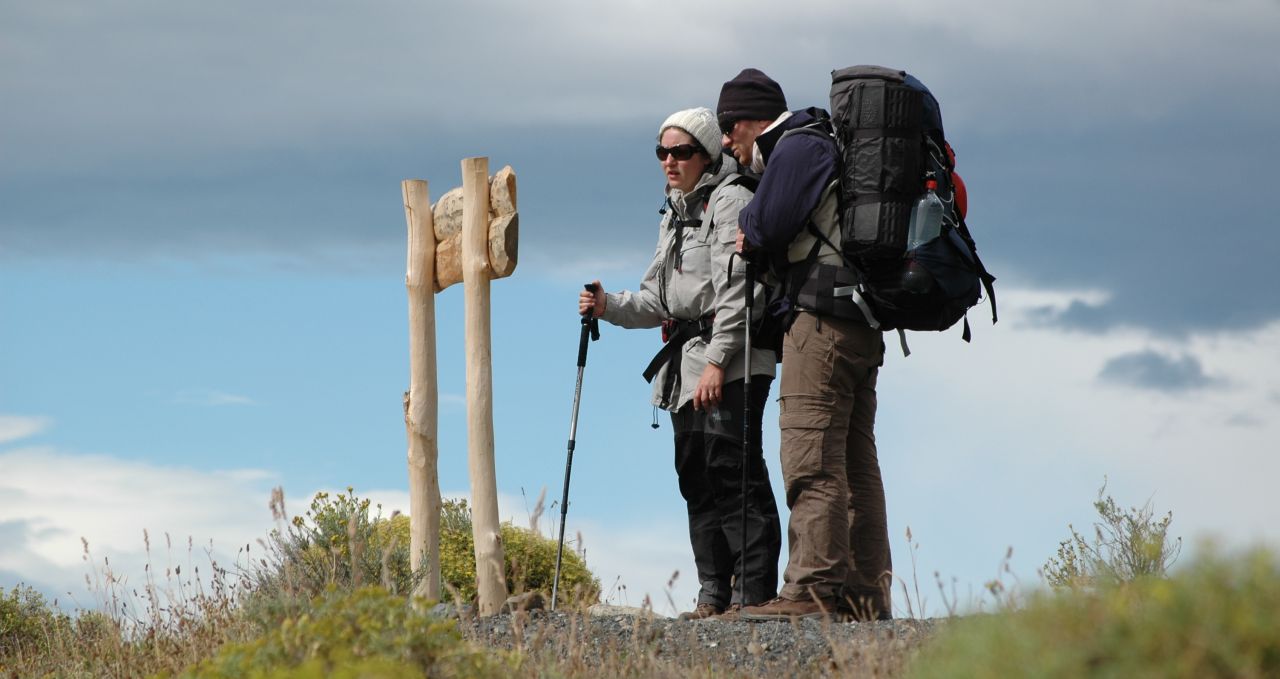
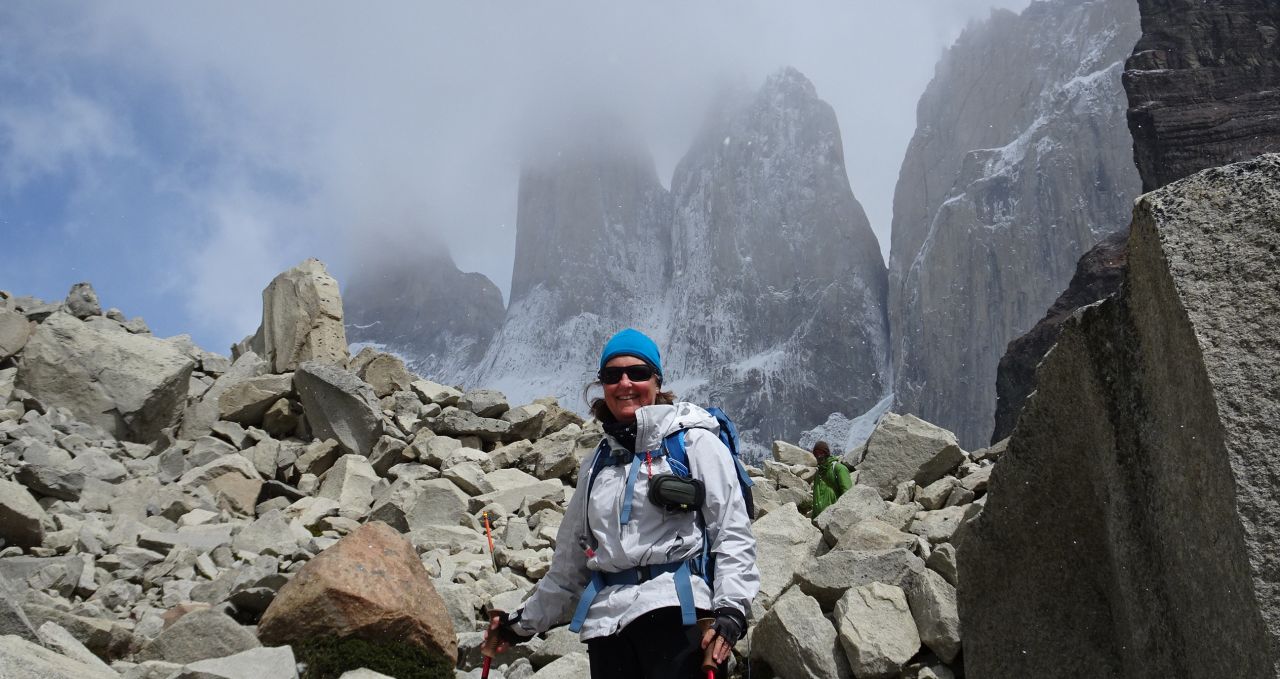
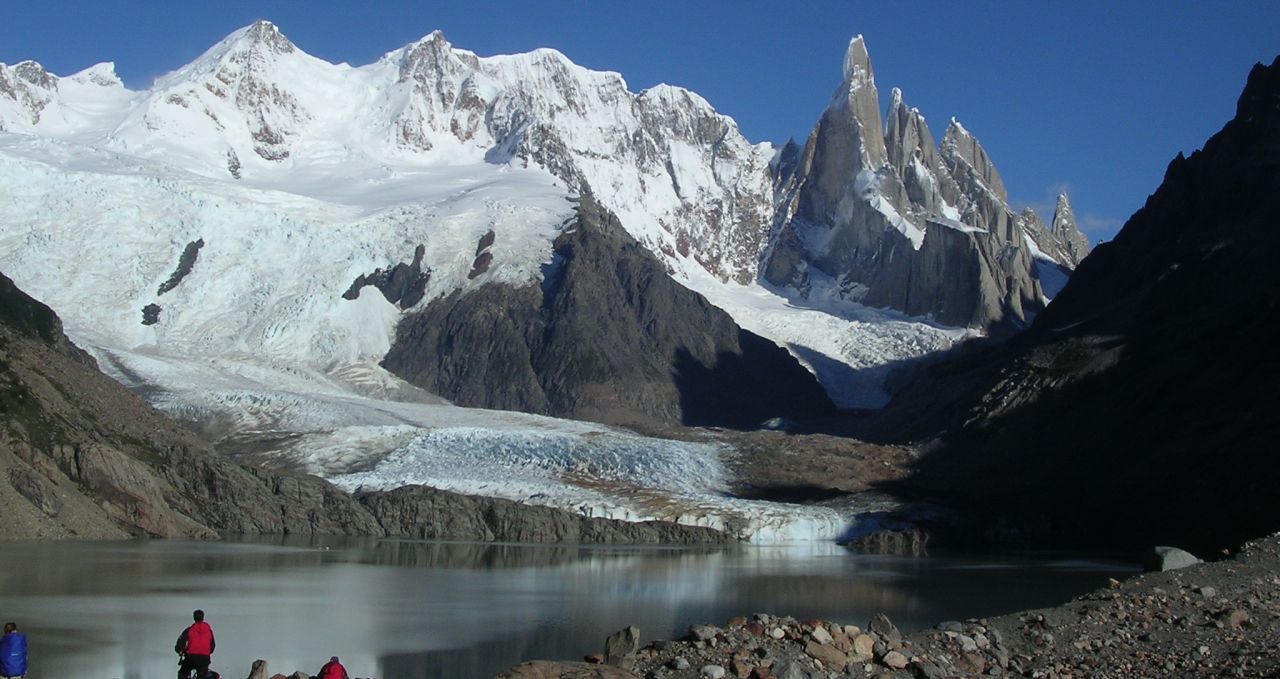
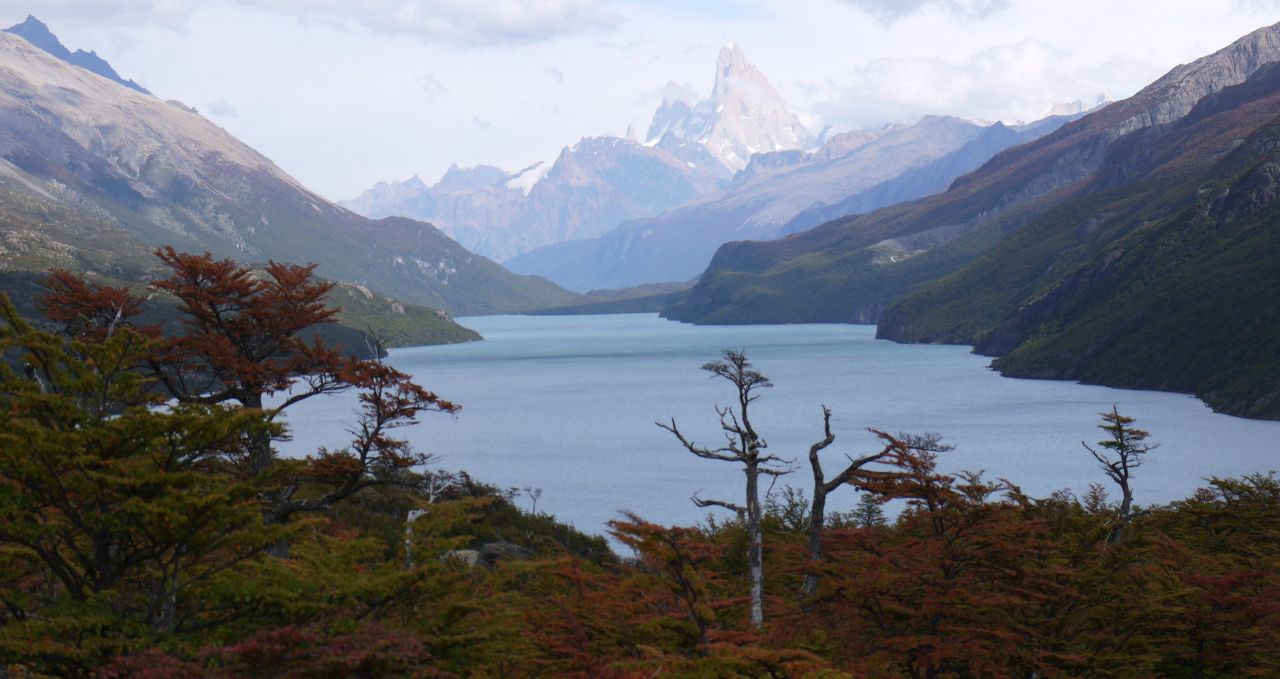
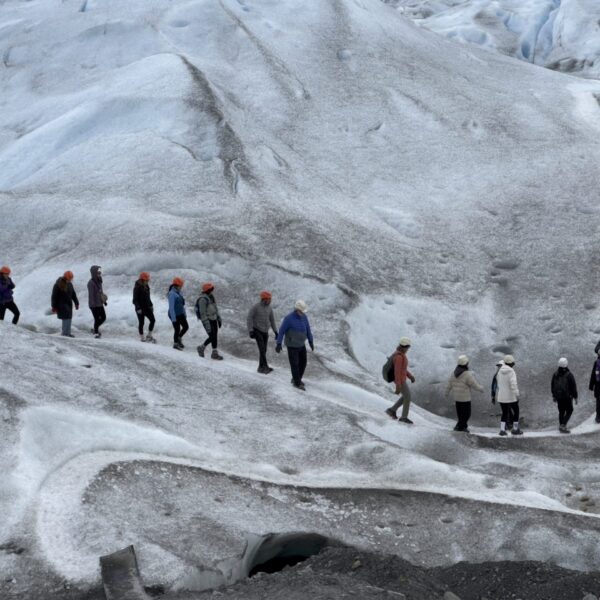
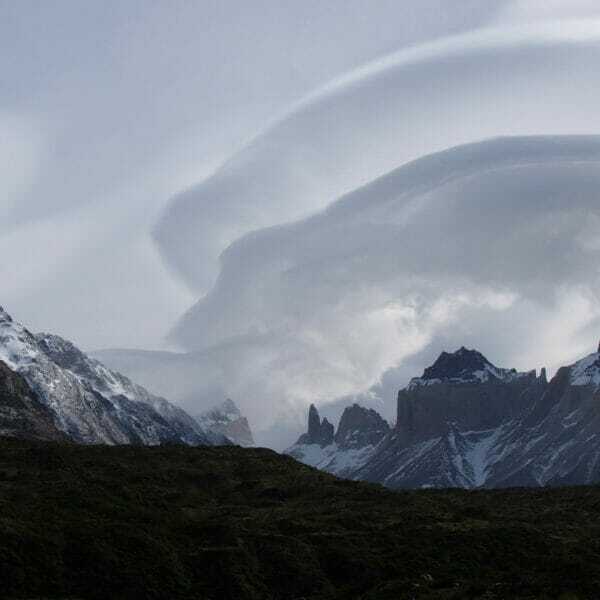
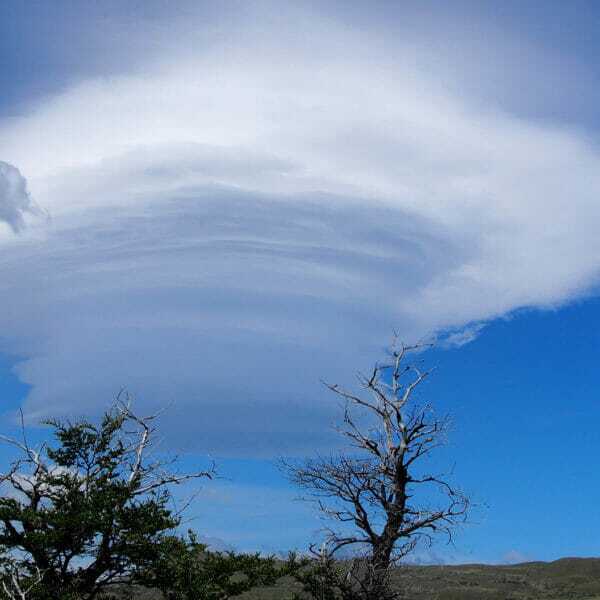
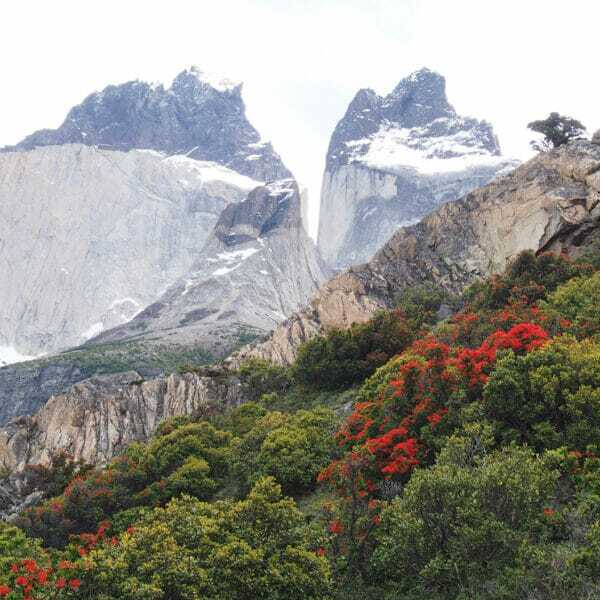
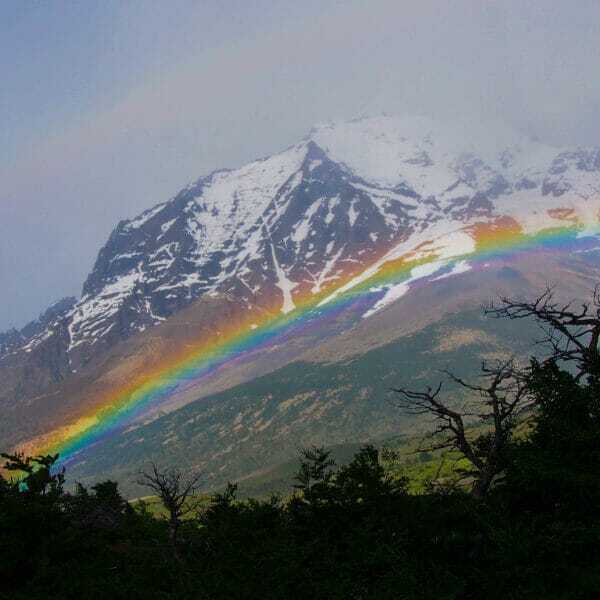
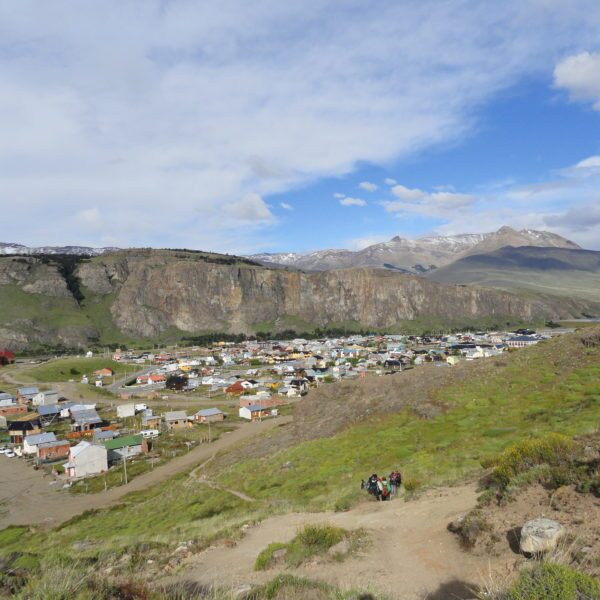
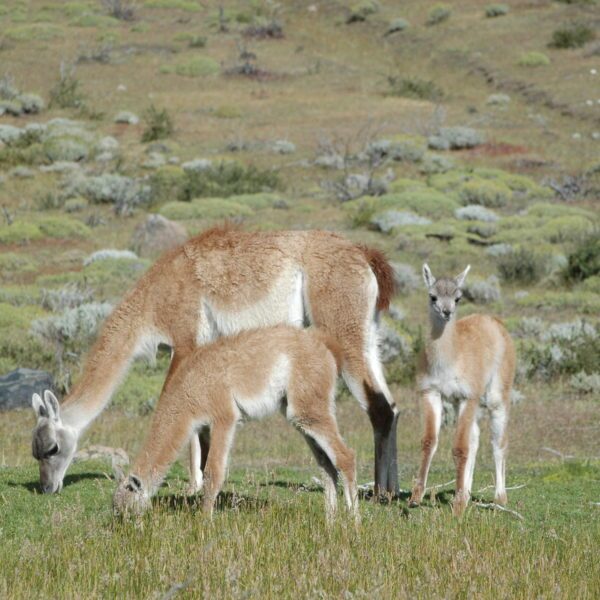

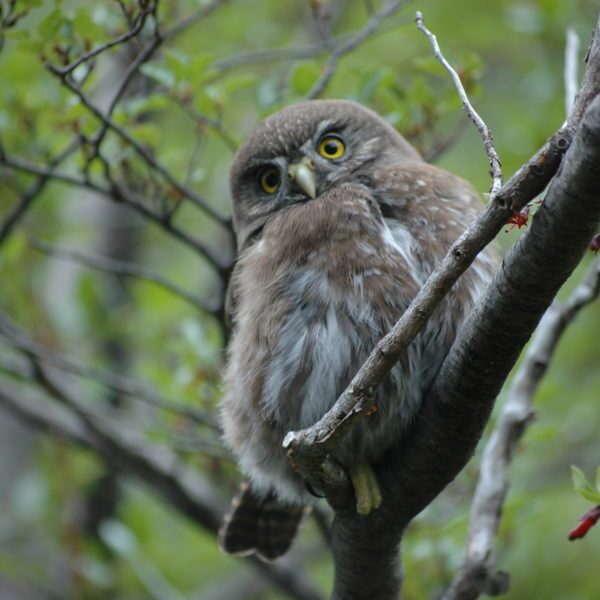
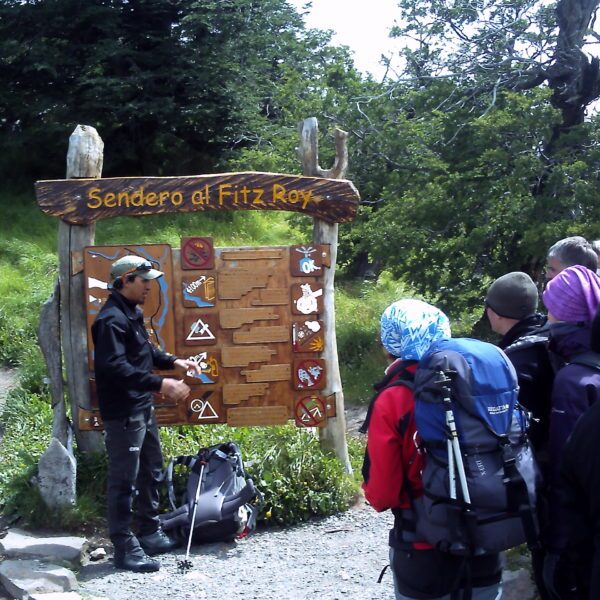
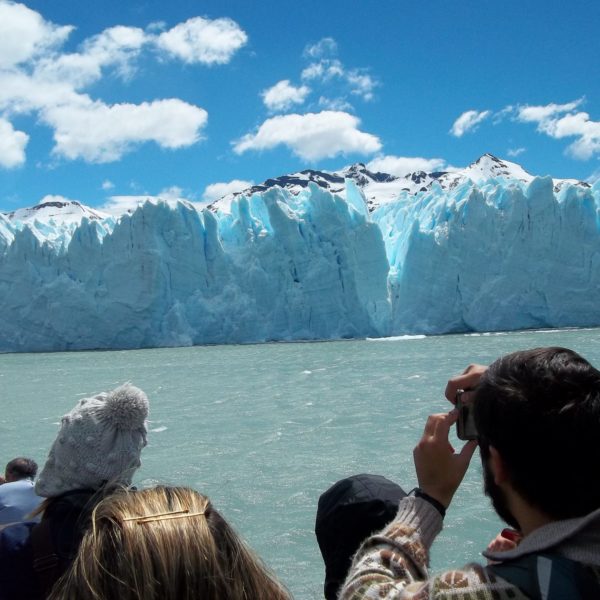
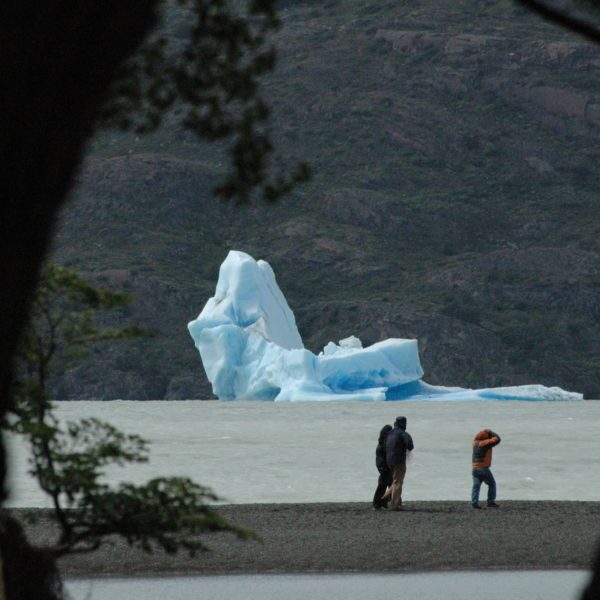
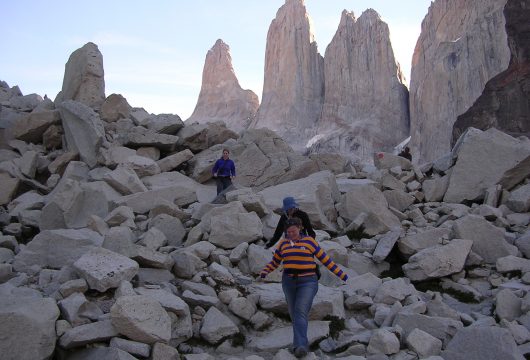

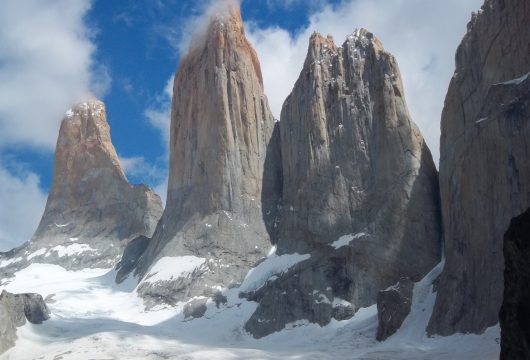
 a Group Tour
a Group Tour  a Tailor Made Tour
a Tailor Made Tour 